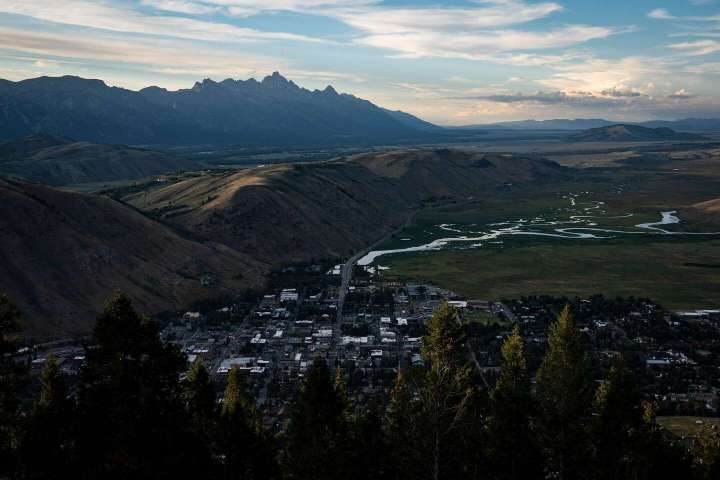Last week, I was lucky enough to find myself giving talks in two of America’s most gorgeous spots — the majestic mountain idyll of Jackson Hole, Wyo., and the rolling green hills of western New York.
The ‘Zoom revolution’ enriched Jackson Hole. But what about Buffalo?

In one case, it already had. Like many resort destinations, Jackson Hole became a “Zoom town” during the pandemic, as the footloose and flush escaped to locales where they could substitute spectacular views for human contact.
The result has been predictable to anyone who has watched that same class of affluent professionals crash into the zoning and land use restrictions of America’s most prosperous coastal cities. Since only about 2 percent of the land surrounding Jackson Hole is available for development, home prices spiked; the median listing value is now north of $3 million. Locals are necessarily being displaced — and presumably their resentments are growing, as they certainly are in similar places such as Bozeman, Mont.
Quite a contrast with Buffalo, N.Y., the heart of the region where I gave my New York talk.
Follow Megan McArdle‘s opinions
FollowInstead of too little capacity to meet booming demand, Rust Belt cities such as Buffalo have more houses and infrastructure than they need or can (easily) afford to maintain. As recently as 2017, Buffalo was one of only six cities in the country where more than 15 percent of the housing stock sat vacant; the median listing price in the area is less than $200,000. The pandemic may have somewhat boosted Buffalo’s fortunes — at least, the 2020 Census registered the first increase in the city’s population since 1950. But that’s still less than half of what it was 70 years ago.
The locals would love to see people filling up those vacant places again, and doing so would certainly ease the financial and economic woes of depopulation. Young people have been leaving for decades, chasing Sun Belt weather or big-city excitement, but mostly chasing jobs. And while many of them are glad for the change, many others would rather be back among the gentle hills and endless lakes, and all the people they were forced to leave behind.
Over decades of intermittent inquiries into the region’s future, I’ve interviewed dozens of that latter group — enough to make me sure that there were thousands or maybe millions more of them out there, longing for home. I’ve also spoken to people from other areas who found the region appealing, whether for its stock of lovely old prewar houses or as a haven from global warming. But all of them said, regretfully, that they couldn’t make the move; the jobs just weren’t there.
Remote work can’t accommodate all those folks’ wishes — too many jobs, from trash collection to neurosurgery, have to be done in person. But if the more mobile workers migrate, they’ll create more demand for those other services. Potentially, they could also help re-create the kind of middle-class life that both left and right are so nostalgic for: prospering communities with deep roots, where kids could grow up surrounded by aunts and cousins, parents could count on help raising their families, and grandparents could enjoy plenty of time with the grandkids, as well as someone nearby to help out as they age.
Cities and towns, of course, could use the tax revenue, and the social capital that their most ambitious and capable young people take with them when they’re forced to leave in search of work. And frankly, some of the other areas people have been moving to could use a break from relentless population pressure. The Mountain West and the Sun Belt could probably do with less competition for scarce water, and the prosperous coastal cities would be better off with fewer people to house since they refuse to allow enough building to let supply meet demand.
Whether or not this happens, of course, depends on how willing employers prove to commit to a long-term future of remote work. But it also depends at least partly on policy choices: Despite an abundance of cheap real estate, western New York has a comparatively high cost of living, thanks to heavy taxes, and high prices for such essentials as electricity and gasoline.
The most important question, however, might be cultural: What is it that we want from the Zoom revolution? Is it freeing us to retreat deeper into our private worlds, or is it enabling us to build up richer communities beyond the office? I don’t know the answer to that question. But I do know that remote work ought to be good for something besides letting rich people enjoy better views.






